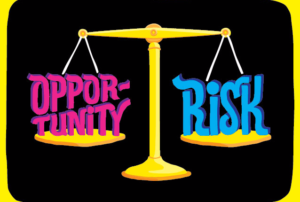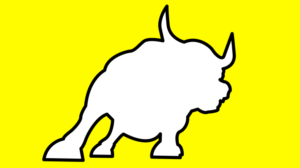In 1987, Buffett famously stated, “I’ll tell you why I like the cigarette business. It costs a penny to make. Sell it for a dollar. It’s addictive. And there’s fantastic brand loyalty.”
“The best business to own is one that over an extended period of time can employ large amounts of incremental capital at very high rates of return.” – Warren Buffett
“Invest at the point of maximum pessimism.” – John Templeton
Warren Buffett’s best winners have always been stocks which were bought during times of maximum pessimism. GEICO was bought on the brink of bankruptcy. AMEX was bought during the Salad Oil Scandal. Goldman Sachs was also bought with bankruptcy looming.
Wells Fargo was a bank with a largely residential loan book bought during a housing crisis. Coca-Cola was bought at a time of massive overdiversification. And so on and so forth.
It’s not often that one has the opportunity to put into practice the all-encompassing philosophy of buy low, sell high. But even when that opportunity rears its ugly head, it’s the rare investor who has the aptitude and the stomach to back up the truck.
Thankfully, these opportunities do exist, but it takes a keen eye to discern the difference between a falling knife and a once-in-a-lifetime opportunity.
Overview
British American Tobacco (BAT) Malaysia is one such example. At the time of writing, it is trading at just 9x PE, sporting a 100% ROE, and giving a 13% dividend yield, it’s hard not to salivate a little at the financial statistics. But why is such a high ROI stock – a cigarette company no less – trading at such awfully low valuations?
First, some history. BAT Malaysia is the largest cigarette company in the country, with a roughly 50% legal market share and 12% total industry market share. If you’re observant, you’ll notice that Malaysia’s illegal cigarette market share takes up a whopping 65% share of the pie.
This was largely due to the massive excise duty (i.e. sin tax) hike in 2015, which brought illegal market share from a reasonable 33% before the hike to 65% and rising today.
As a result, BAT Malaysia has suffered massive share price declines, with the share price falling by 85% in the past 5 years (from RM 60 in 2015) and 70% in the past 12 months alone (from RM 37 in early-2019).
This was largely due to revenue declines of nearly 20% and earnings decline of 40% over the past 3 years, with a corresponding shortfall in dividends (the company has a 90% dividend policy). ROE has also fallen from approximately 200% to around 100% today.
Thus, it’s not surprising that the stock has taken such a beating. Indeed, over the past two weeks alone the stock price has fallen by about 30%. But is investing in it now simply trying to catch a falling knife?
Business Narrative – What Happened?
The source of the problem can largely be traced back to the sin tax hike in 2015, which brought illegal cigarette market share from 33% to 65% over the past 5 years. The Malaysian government has not been very accommodative to local industry players, rebuffing efforts to reduce the sin tax and dragging its feet when it comes to the enforcement of existing laws and the introduction of new ones.
The local Customs department, working together with the police, has had some success in recent years tackling the illegal cigarette cartel – arresting the decline in legal market share from 20%-30% annually to just above 10% in the past year – but efforts are largely seen as too little, too late.
On top of that, the illegal vaping scene has blossomed in Malaysia, with nicotine-related products claiming up to 10% of total industry market share. This backdrop has inspired analysts to impose doomsday scenarios for the legal industry players (i.e. BAT, PMI & JTI), according present values to the companies which reflect a resumption of historical revenue and market share declines.
Indeed, when parsing the financial statements of BAT, it’s not impossible to forecast revenues declining to a point where they fall below operating costs (i.e. EBITDA of zero), rendering the equity essentially worthless valuation-wise.
The main reason for the government’s lack of progress is bureaucracy. Different governmental ministries have drawn different interpretations of their legal jurisdiction regarding the matter, and thus shuffle the responsibility of arresting the illegal trade to their peers.
For instance, the Ministry of Health (MOH) has stated that it has no authority to enforce legislation against illegal cigarettes, while the Customs department disagrees and says it is the MOH’s prerogative to clamp down on illegal cigarette packets which don’t portray mandatory and unsightly health warnings (illegal cigarette packets tend not to include them).
As a result of the red tape, there has been little progress on the front lines, and legal industry players are lesser off for it.
BAT and JTI (the two largest cigarette players) have resorted to shutting down their manufacturing operations and implementing an importation business model, where legal cigarettes are imported from Indonesia into the country to be sold. BAT has also gone through one round of layoffs last year, with a second round expected in 2020.
Financials
As alluded to earlier, revenues have declined by 20% over the past 3 years while net profit has declined by 40%. This was surprisingly not due to a contraction of Gross Margin (which you’d expect as costs go up when switching from a manufacturing model to an importation model), but largely as a result of revenues falling while operating costs remain the same.
This can be seen in the Operating Margin falling from a high of 24% in 17Q3 to 18% in 19Q3, and net margin contracting from 18% in 17Q3 to 13% in 19Q3.
On the balance sheet side, things look slightly rosier. Intangibles take up the lion’s share of assets (40%), while Inventories and Receivables have declined slightly in line with the fall in Revenue. Net cash is negative owing to a revolving credit facility which the company has drawn presumably for tax reasons.
The debt is current in nature and can be paid back in full with 2 years of Free Cash Flow. The company doesn’t have much fixed assets remaining following the closure of its manufacturing plant, indicating that liquidation value (approximately zero) falls far short of market value. Current ratio is reasonable at 0.8x. Share capital has not changed for at least 3 years.
Receivable days and Inventory days have respectively increased by roughly 50% over the last 3 years – indicating a struggling business which is facing business challenges from its illegal brethren. Payable days have remained static over the same time period. As a result, Cash Conversion Cycle stands at 79 days, up by double from 33 days in 2018.
Cash flow is still stable, with cash receipts approximating revenues. Free Cash Flow is almost equal to Operating Cash Flow, exemplifying the asset-light nature of the current business. The company pays out the entirety of its FCF as dividends (and then some), leading to a dividend yield of 13% at the current share price and a 118% dividend payout ratio.
If you’re keen on analyzing the quarterly financial statements of the last 3 years yourself, click here: https://docdro.id/mRZ8g3Y
Risks
The risks are apparent. If the government doesn’t do something about the illegal trade and allows it to run rampant, it’s possible that illegal market share increases from here and revenues continue to decline.
In the worst-case scenario, it’s not hard to envision revenues falling below operating costs and EBITDA reaching zero, implying the shares are worthless and that dividends will be cut or even stopped entirely.
The current share price of 9x PE reflects this doomsday view. The market is basically pricing in declining earnings growth into perpetuity and giving no stock to a potential turnaround.
Government intervention to address the illegal trade is widely perceived as sorely lacking and possibly not existing, with analysts imputing revenue declines of up to 30% a year into their models. Share price targets range from RM 11 – RM 15, although the share price has fallen by some 20% since the last revision of analyst reports.
All in all, it seems like bad news for BAT.
Opportunities
The opportunities for BAT, while less apparent, do exist. For one, the government could by some miracle successfully enforce existing laws and put the brakes on illegal trade – it has already slowed the latter’s advance by some 50% since the sin tax hike.
Alternatively, the government could recognize the disadvantages of the narrowing tax base from legal cigarettes and decide to reverse or reduce the sin tax, leading to a reclaiming of legal market share by industry players to previous highs.
By some back-of-the-envelope calculations, if legal market share rises to just half of their historical levels, BAT’s earnings and share price could double from here. PE ratios would also expand in such a scenario.
BAT’s parent company in London could also decide to acquire the Malaysian subsidiary given the depressed prices. A fair market price given the circumstances would be roughly 15x PE, which assuming earnings continue to decline by 30% from today, would put the acquisition price at around 120-130% from current share prices.
BAT has also been experimenting with nicotine-related products, such as the Heat-Not-Burn (HNB) device known as Glo (PMI has a branded competitor known as IQOS). Both have received glowing reviews from former cigarette users and is expected to help the companies transition into the post-smoking era (i.e. 20-30 years from now).
So far, Glo has developed a 1% total industry market share in Malaysia despite only being launched 2 years ago, showcasing its popularity and potential success.
Finally, the government is preparing the release of new legislation regarding vaping, which is due to see light by mid-2020. While legalization is still not guaranteed, government officials have publicly admitted the difficulty of enforcing laws if a vaping ban were to be instituted.
If vaping is legalized, the legal industry could see a 10% increase in market share overnight as they introduce their own products to supplement the demand for currently illegal products.
Banking on the Risk to Reward Ratio
In my opinion, current share prices have priced in all the risks while discounting all the opportunities. Even assuming earnings decline at an average annual rate of 10% into perpetuity, it would take just ten years to reclaim your initial investment.
This is assuming illegal market share continues its rise unabated and legal market share never sees the light of day again. Keep in mind that the company has a 90% dividend payout policy, and has kept this rate despite recent struggles in its business, so you’d get a return of capital regardless of the share price performance.
In this worst-case scenario, the parent company would either push for an acquisition or liquidate the Malaysian operations. An acquisition at fire-sale prices would probably yield at least 5x PE, while a liquidation would yield nothing given the current ratio of 0.8x.
The latter is highly unlikely because it would mean that BAT ceases to have a presence in Malaysia completely, a growing South East Asian nation with GDP growth of 4-5% and potentially bright future. Hence, given the probabilities and an estimate of expected value, you’d already come out on top at the current PE of 9x.
What about the alternative? Before we get into the valuation from an opportunity set perspective, let us consider BAT’s business model. As Buffett says, this is a company with unit economics of a penny per cigarette, selling them at a dollar per cigarette, fantastic brand loyalty and a captive audience.
Imagine if you could have owned Altria in the USA in the 1970’s. Today, you’d own Altria, Kraft Heinz, PMI and a smattering of profitable businesses around the world. While I don’t mean to draw a direct comparison between BAT Malaysia today and Altria USA of the 70’s, it’s not hard to imagine a similarly wonderful future for a company with such an attractive business model.
As far as economic moats are concerned, the cigarette business is probably one of the few businesses you can say will be around in another 20-30 years. Sure, they’re facing headwinds in the form of a burgeoning illegal cigarette trade today, but who says they will still be facing the same demons 10 years from now, or even 5 years?
If there’s one thing for certain, it’s that the business environment is fluid – and chances are good that things won’t remain the same as today, whatever they may be.
A Reasonable Bull-Case Scenario Valuation
Let’s put the humdrums aside for a moment and imagine a brighter future for BAT. What would this future look like? For one, it’s possible that within the next 5 years the government realizes it can’t contain the illegal cigarette problem and decide to reduce the sin tax to previous levels.
The wider tax base resulting from such a move would result in the same absolute amount in taxes even at lower tax rates – so there is no financial disincentive not to do so – while at the same time reducing the illegal market share. If legal market share even reclaims half of their former levels, the share price of BAT could double from today.
Furthermore, what’s stopping BAT from resuming earnings growth, assuming the business environment recovers? Even if earnings grow by just equal to GDP growth (i.e. 4-5% a year), it would justify a 15x PE at the minimum considering a long-time horizon of 20-30 years.
Combine a doubling of earnings with a 15x PE, and you’re looking at a potential quadrupling (4x) of the current share price.
A Best-Case Scenario Valuation
If BAT reclaims its former glory and returns to its historical market capitalization of RM 18 billion, we’re talking about a 600% increase in share price.
That’s just for the next ten years. What about dividends beyond that? Let’s imagine the best possible scenario for BAT.
Assume for awhile that you’re planning to hold BAT for the next 30 years. Assume also that in ten years’ time, BAT’s share price skyrockets to 600% of current levels, and then grows earnings by 4% a year into perpetuity and pays out 90% of earnings at dividends.
Account for 3% inflation and zero percent cost of capital (i.e. growth funded from retained earnings). By the end of year 30, you’d end up with 27x your initial investment, or 2700% of your capital. That’s a 12% CAGR.
In other words, a $40,000 investment in BAT today could potentially yield a million dollars in 30 year’s time. And that’s with reasonable assumptions. Tweak the numbers further and you’ll could potentially reach Buffett-like returns.
Conclusion
To sum things up, it appears that current share prices already impute the worst-case scenario, while the best-case scenario is a 600% capital appreciation potential in ten years, or 2700% over 30 years.
Giving a margin of safety, let’s dial the ten-year return of 600% down by 50% – we still get a 300% reward scenario. That’s a 12% CAGR over ten years. Not too shabby.
Assuming 50% downside from today’s prices, the upside-to-downside ratio at 300% upside would still be a healthy 1:6. Now that’s a margin of safety.
If you believe that BAT has no future in Malaysia and will ultimately be acquired or liquidated, expect share prices to fall by up to 50% from here. If you expect that the legal industry will recover to former highs and that BAT is well-positioned as the largest cigarette player in an ASEAN country with 4% GDP growth (alongside Vietnam, Singapore, and Indonesia), you can expect share prices to rise by at least 300% over the next 10 years.
More realistically, share prices will fluctuate by 20% from current levels both to the upside and downside over the next year or so. If you can stomach that kind of volatility, BAT makes for a wonderful risk-reward component of your hopefully diversified emerging market portfolio.
A Value Investor’s Perspective
As mentioned above, Warren Buffett has a history of buying companies for pennies on the dollar when the share price reflects maximum pessimism.
This does not mean to dive blindly into freefalling stocks which you do not understand. It does mean that you should do your homework, and when you spot an attractive risk:reward ratio in stocks where others are running for the exits, you should be comfortable holding a large position.
Buying a leading cigarette company in its market while it’s beaten down represents one of the most potentially profitable investments imaginable. For reference, take a look at Altria.
If you had bought $1,000 worth of shares in Altria in 1970, and reinvested all the dividends, you would be sitting on a fortune worth $5 million by today. That’s an astounding 18% CAGR over an extraordinarily long period of 50 years.
Can BAT Malaysia repeat this tier of performance? Probably not, but you don’t need to in order to make a satisfying profit from it.
Buffett espouses thinking long-term when it comes to investing. Think about the long-term when it comes to BAT Malaysia. Is it likely that illegal cigarette’s share of the market will remain elevated at 65% or above for the next 20 years continually? If I was a betting man, I’d wager that it won’t.
More likely than not, some kind of unforeseen development will unfold which will bring market share back into the folds of the legal industry – it could be vaping, HNB products, a newly yet unrevealed form of nicotine-device, or even an evolution in the way smokers think.
What can be relied on however is that in 20 years smokers will still continue to view nicotine, and by extension smoking-related products, as a form of entertainment and relaxation.
Then there’s the dividends. The dividend yield on one share of Altria bought in the 1990’s held until today would exceed 30%. This is because the dividends have grown over the years in tandem with earnings growth.
Extrapolate that to BAT Malaysia, which currently has a dividend yield of 13%. Assuming an average of 4% earnings growth going forward, that dividend yield would grow to just about 40% in 30 years. That’s the power of compounding.
Buffett also champions the idea of owning companies with fortress economic moats. Some of the companies which he owns have such moats, including Coca-Cola, Wells Fargo, GEICO, American Express, etc.
It’s hard to argue that BAT Malaysia doesn’t have such a moat. Even in such trying times where revenues have contracted by 20%, it still sports a high-flying ROE of 100%, and stable gross margins of 30%. I would go so far as to compare BAT Malaysia today to a Coca-Cola or American Express when Buffett bought them during times of pessimism.
Think about the future of BAT in 10 years, or 20 years’ time. It’s likely that it will have overcome the temporary hurdles which it faces today by then and resume earning high returns on significant capital invested over a long period of time.
This is truly a compounding machine if there ever was one. Or as the title suggests, a wonderful company trading at a wonderful price.
Remember that Buffett’s best buys in the public markets have all been investments made during trying times, such as what BAT is facing today.
AMEX could have gone bankrupt over the Salad Oil Scandal. GEICO was literally months away from being unable to service its insurance liabilities. Goldman Sachs was teetering on the brink of financial collapse under the heavy weight of subprime mortgage obligations.
Coca-Cola was not the company it is today – it was an overburdened, overdiversified conglomerate with little growth outlook. Wells Fargo was staring at a huge, unserviceable loan book immediately following the Californian earthquakes given its significant residential exposure.
It’s definitely nice to pay fair prices for wonderful companies, but it’s even better to be able to pay wonderful prices for wonderful companies.
In times like these, it pays to reflect on some words of wisdom for guidance:
Buy when there’s blood in the streets.
Be greedy when others are fearful.
In the short-term, the market is a voting machine; in the long-term, it is a weighing machine.
Price is what you pay, value is what you get.
It is far better to buy a wonderful company at a fair price, than a fair company at a wonderful price.
Opportunities come infrequently. When it rains gold, put out the bucket, not the thimble.
May the investing odds be ever in your favor!
Stock code: 4162.KL (Bloomberg: ROTH MK)
Stock name: British American Tobacco (Malaysia) Berhad
Financial information and financial reports: https://www.malaysiastock.biz/Corporate-Infomation.aspx?securityCode=4162







